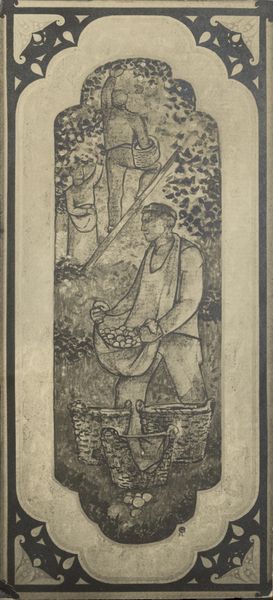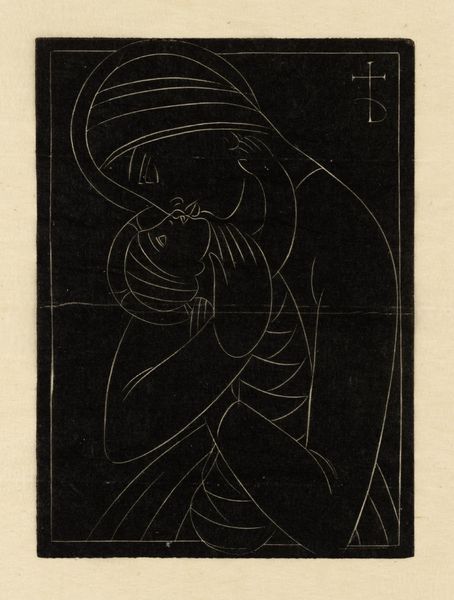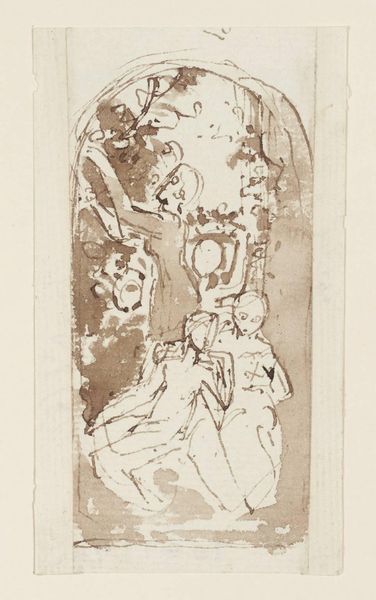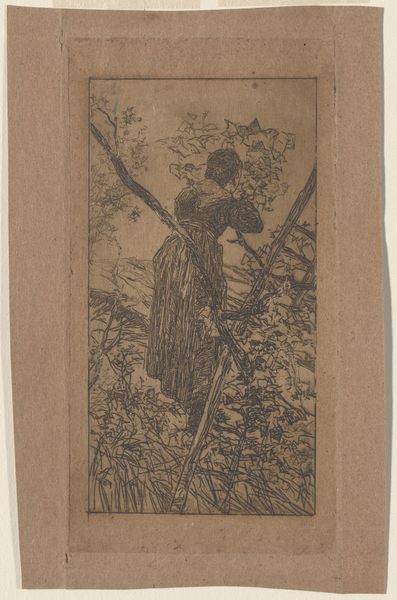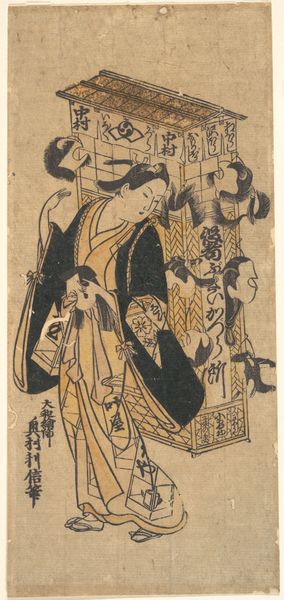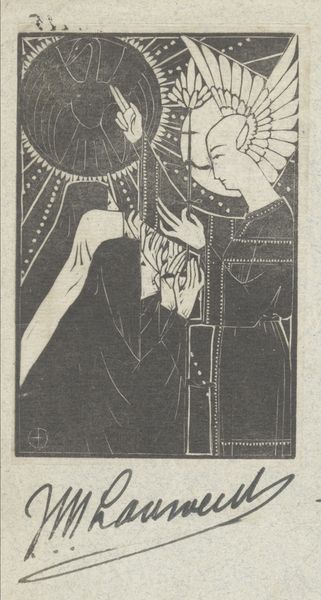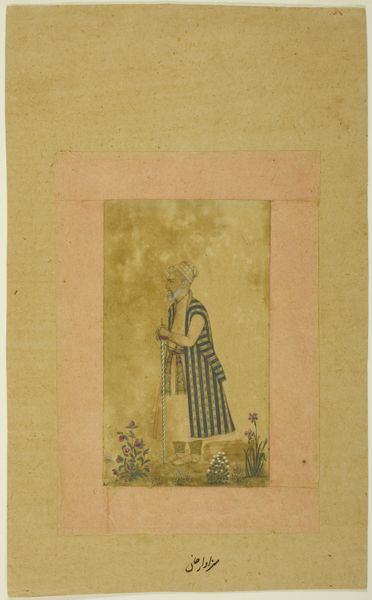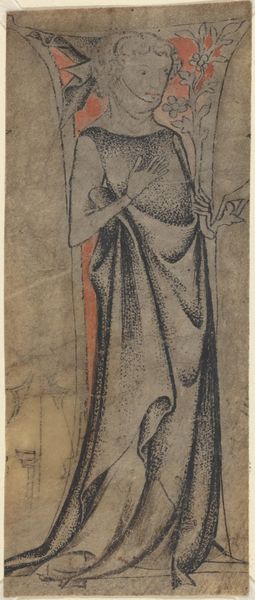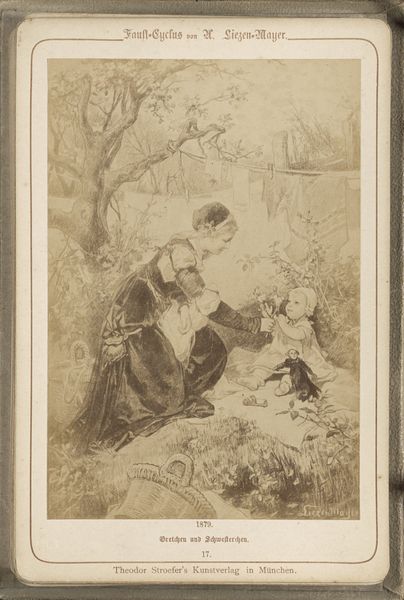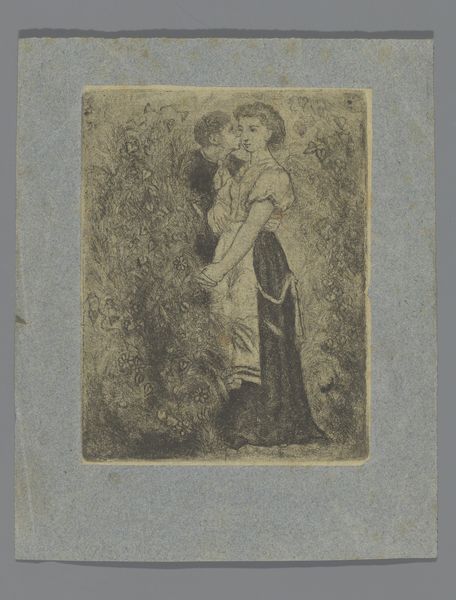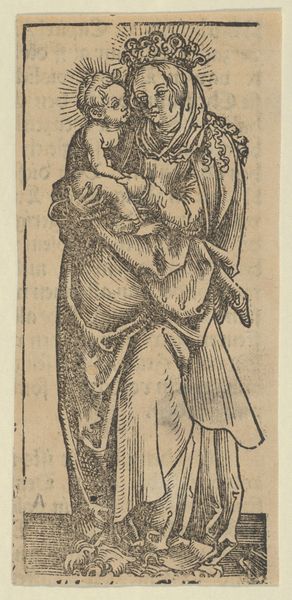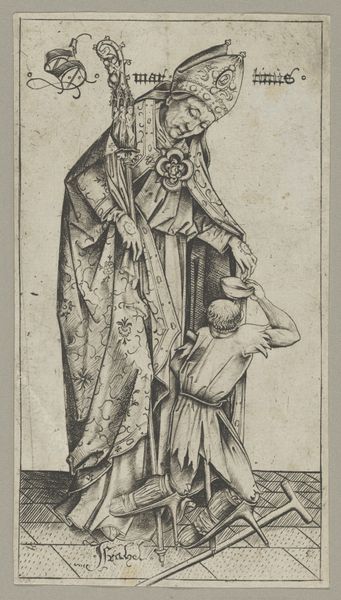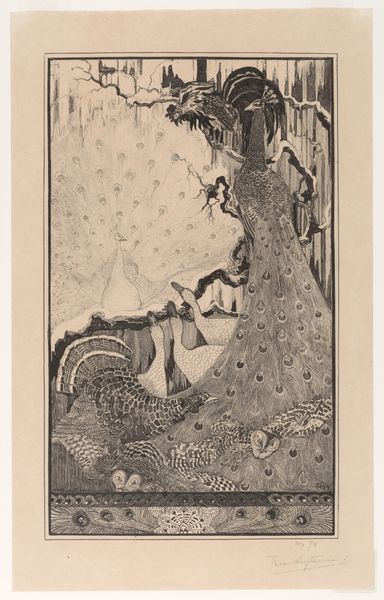
Fotoreproductie van ontwerptekening met vrouw en kind voor glas-in-loodraam door Richard Roland Holst 1909 - 1914
0:00
0:00
drawing, paper, ink
#
drawing
#
mother
#
landscape
#
figuration
#
paper
#
ink
#
symbolism
#
watercolor
Dimensions: height 405 mm, width 187 mm
Copyright: Rijks Museum: Open Domain
Curator: The tenderness of this scene is quite affecting. Editor: Indeed. This is a photographic reproduction of a design drawing created by Richard Roland Holst sometime between 1909 and 1914. It's an ink and watercolor work on paper. The title translates to 'Photographic Reproduction of a Design Drawing with Woman and Child for a Stained-Glass Window'. Curator: It reads as a modern Madonna. Note how the lines are soft, almost blurred, the ink and watercolor delicately applied. Holst's treatment of light and shadow really emphasizes the quiet intimacy between mother and child. Editor: But beyond its formal properties, let’s consider the original commission for stained glass. It’s intriguing that Holst, a socialist artist, was making art for, likely, a wealthy patron. This speaks volumes about the commodification of artistic labor, even within seemingly progressive movements. How did the original context shape Holst's artistic choices? Curator: The stained-glass format is definitely key. The leading would have given hard edges to the image—a strong, linear structure. This photorealistic reproduction softens it; we lose the framework intended by the original technique. It presents as more romantic, almost sentimental. Editor: Right, and thinking about it being placed in architecture shifts our understanding of consumption. Stained glass isn’t easily transported or sold; its value comes from the labor required to install it. I am wondering if the drawing itself becomes a study in power dynamics, with the mother acting as both caregiver and symbol of societal ideals for wealth. Curator: Possibly so, or simply exploring universal emotions in a specific visual style. The Symbolist influence is visible in the idealized figures and the vaguely dreamlike landscape setting. It invites contemplation, almost to the point of devotional. Editor: Well, that brings us back to labor—the manual labor in creating the artwork and in understanding and interpreting the work and the meaning tied to consumption by the commissioner. What are the real costs in the image of motherly love? Curator: Ultimately, it is a compelling visual exploration, prompting discussion. Editor: Agreed, a window into more than just a lovely scene.
Comments
No comments
Be the first to comment and join the conversation on the ultimate creative platform.
